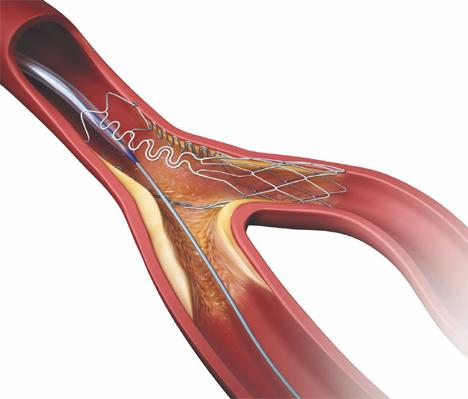
CAD is the narrowing or blockage of the coronary arteries caused by atherosclerosis.
Atherosclerosis is the buildup of cholesterol, fatty and inflammatory deposits (called plaque) on the inner walls of the arteries that restrict blood flow to the heart. Without adequate blood flow, the heart becomes starved of oxygen and vital nutrients it needs to work properly.
It is often useful to think of the heart arteries like a tree with branches. At the site where a side-branch vessel comes off of the main coronary artery, plaque and fatty build-up are more likely to develop because of forces related to changes in blood flow. Stenoses, or narrowing, located in a main coronary artery and an adjoining side-branch vessel is called a bifurcation blockage or bifurcation lesion. Bifurcation blockages are somewhat more challenging for cardiac interventionalists to treat than blockages that do not involve side-branch vessels, because current stents do not come in a "Y" configuration.
Experienced interventionalists have developed a specialized approach to individualize patient treatment for these blockages, but the treatment procedure is sometimes technically demanding.
To optimize results with current technology, treatment approach for bifurcation blockages includes:
These techniques are continually being refined. Promising research with stents specifically designed for placement at branch point stenoses is under development.